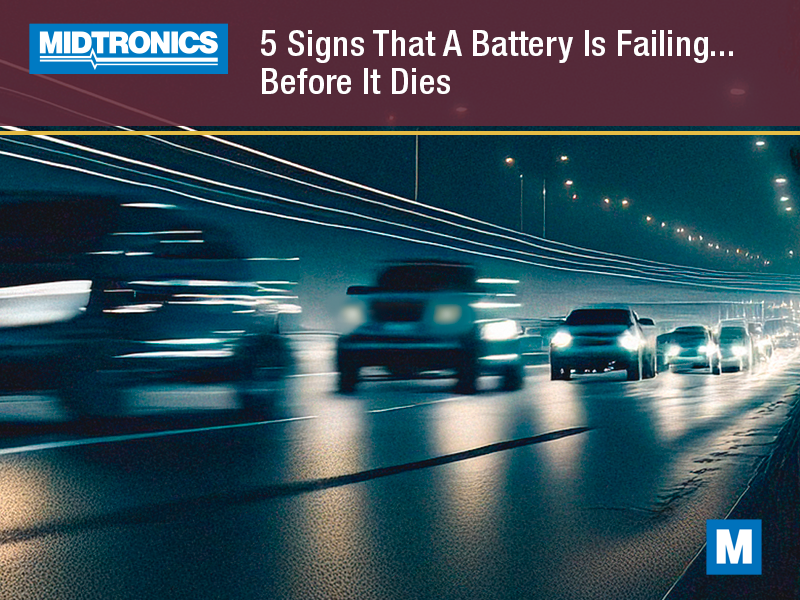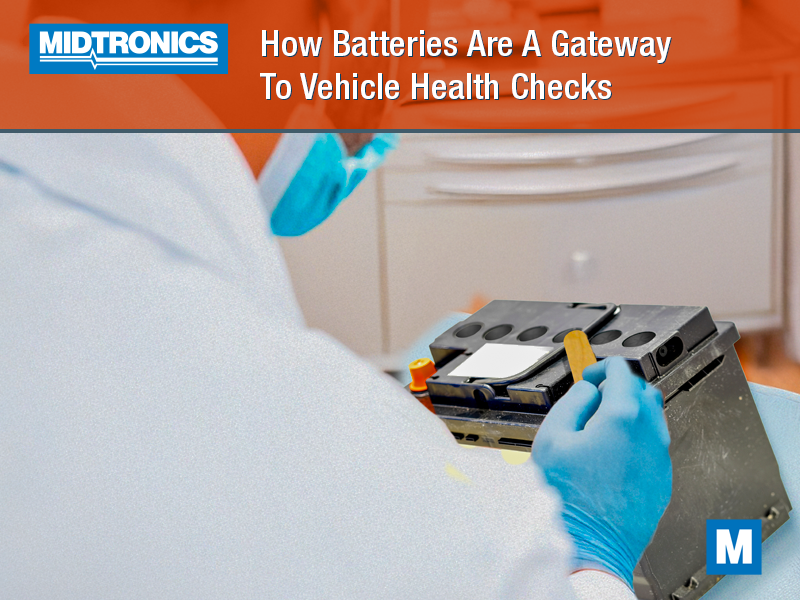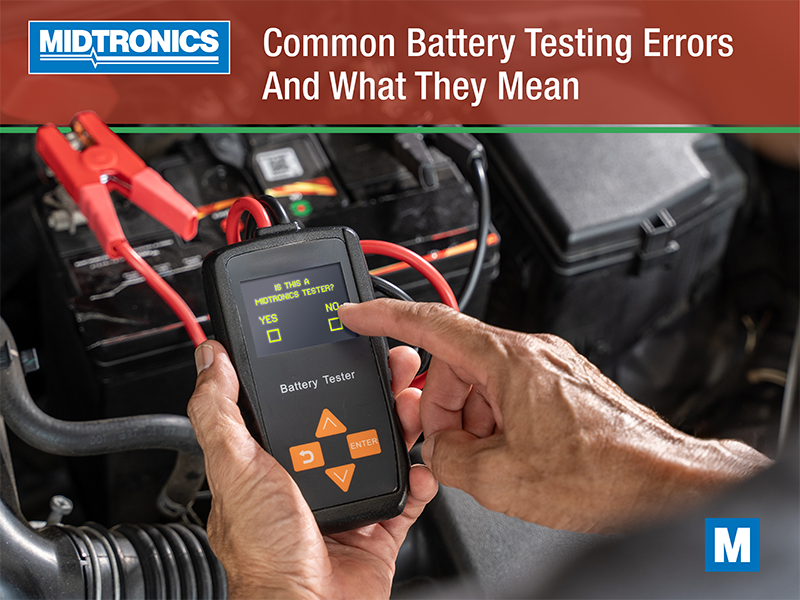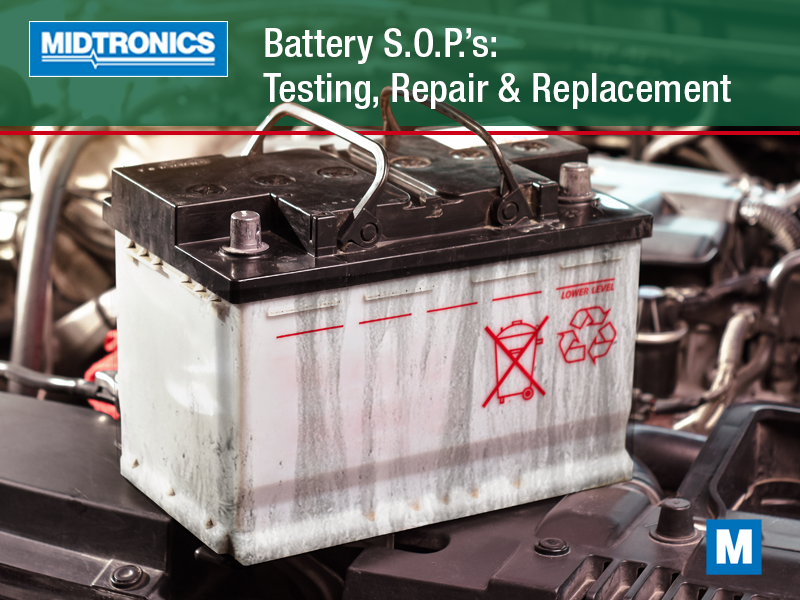There’s nothing like the frustration of a no-start situation. Whether it’s in your customer’s driveway or a service bay that plugs up a technician’s profitability, a dead battery can throw off everyone’s schedule. Your ability to spot battery trouble early can mean the difference between a simple battery sale and an annoyed customer who’s late for work – and may not even give you a chance to sell them the battery they need emergently. Getting ahead of battery failure isn’t just good customer service, it’s smart shop management.
With modern vehicles demanding more from their electrical systems than ever before, batteries are working harder in the background. And while a battery might seem to be holding its charge just fine, there are often subtle signs that it’s headed for trouble. Let’s break down five warning signs that a battery is nearing the end of its life before it leaves someone stranded.
1. Slow Engine Crank
Let’s start with a classic symptom. When a customer turns the key or presses the start button and hears that slow, labored cranking sound, it’s time to pay attention. A healthy battery should crank the engine with authority, catching and starting after only a second or two. When it sounds like the engine is struggling to turn over, that usually means the battery is having trouble supplying enough current.
Cold mornings tend to amplify this symptom, but even in warmer conditions, slow cranking is a red flag. It might still start the car today, but chances increase that it won’t tomorrow. Recommend digging into the problem with a diagnostic tool like a Midtronics DCA-8000 to measure cold cranking amps (CCA) and state of health (SOH), and to determine if it’s the battery or a starting system problem.
2. Dim Lights, Glitchy Electronics, or Electrical Oddities
Today’s vehicles are loaded with electronics, and those components are sensitive to voltage fluctuations. If a battery is nearing the end, you might start seeing:
- Headlights that dim or flicker when idling
- Infotainment systems that reboot or shut off without warning
- Power windows that operate slower than usual
- Instrument clusters with flickering warning lights
- Check Engine lights with false codes
These kinds of electrical gremlins can be confusing for drivers, but for a trained tech or advisor, they’re a cue to check battery health and charging system performance. While alternator issues can cause similar symptoms, batteries that can’t hold a charge often show up in these ways, especially after short trips or periods of begin parked for a long time.
3. Multiple Jump Starts or No-Start Events
Anytime a customer mentions they’ve needed a jump start more than once in the past few weeks, it’s time to test the battery’s capacity. Batteries that can no longer hold a full charge may seem to bounce back temporarily after a jump, but they’re on borrowed time.
This is especially common in vehicles used for short trips that don’t allow enough time for the alternator to fully recharge the battery. Combine that with age or extreme weather, and you’ve got a recipe for failure.
Use a Midtronics tester like the CPX-900 to check everything from State of charge (SOC) to voltage under load and charge acceptance. If the test result shows “Replace,” don’t second-guess it. Advise the owner to replace the battery and help them avoid a breakdown.
4. Swollen Battery Case or Corroded Terminals
Not all signs of battery failure are hidden under the hood. A quick visual inspection during a routine oil change or multipoint inspection can reveal telltale signs:
- Bulging or swollen battery case, usually from overheating or overcharging
- Corroded terminals or greenish-blue buildup
- Cracks, leaks, or a strong rotten-egg sulfur smell
These visual often point to internal battery damage, electrolyte evaporation, or off-gassing. Most times, these aren’t reversible problems with today’s sealed batteries. In any case, this battery is no longer operating in a healthy range and could become a safety hazard if ignored.
Cleaning terminals may help temporarily, but if the case is distorted or leaking, replacement is the only safe move.
5. Battery Age Over Three Years
Here’s a straightforward truth: most car batteries are not designed to last much more than three to five years. Environmental conditions, driving habits, and vehicle type all play a role, but once a battery hits that three-year mark, it’s time to start watching it more closely.
That doesn’t mean you should recommend a new battery the moment it hits year three, but it’s the right time to begin testing it regularly and having those conversations with your customer. Proactively catching low SOH or CCA before cold weather hits gives them the opportunity to replace it on their terms.
Bonus: What the Battery Test Report Tells You
Midtronics battery testers give you data that’s easy to understand and easy to explain. Use the printed or digital report to guide your customer through the results. Highlight terms like:
- State of Health – Indicates battery aging and wear
- State of Charge – Shows how much charge is currently stored
- Measured CCA vs. Rated CCA – Reveals how the battery performs under load
- Decisions like Replace, Recharge & Retest – Provides guidance on what to do next
By taking a couple minutes to walk through the test results with your customer, you build credibility, and they are more likely to approve the battery replacement. If not today, then they’re apt to give you a chance at it the next time they’re in for service.
Stay Ahead of Surprises
It’s far easier to recommend a new battery when the customer is already in the service lane than it is to win back their trust after they’ve been stranded. Spotting these signs early means you’re protecting their vehicle’s reliability and your shop’s reputation.
A strong battery testing routine paired with the right tools from Midtronics turns dead battery problems into easy wins. Whether it’s during routine maintenance, seasonal checkups, or pre-trip inspections, take every chance to check battery health and keep your customers ahead of the curve.




